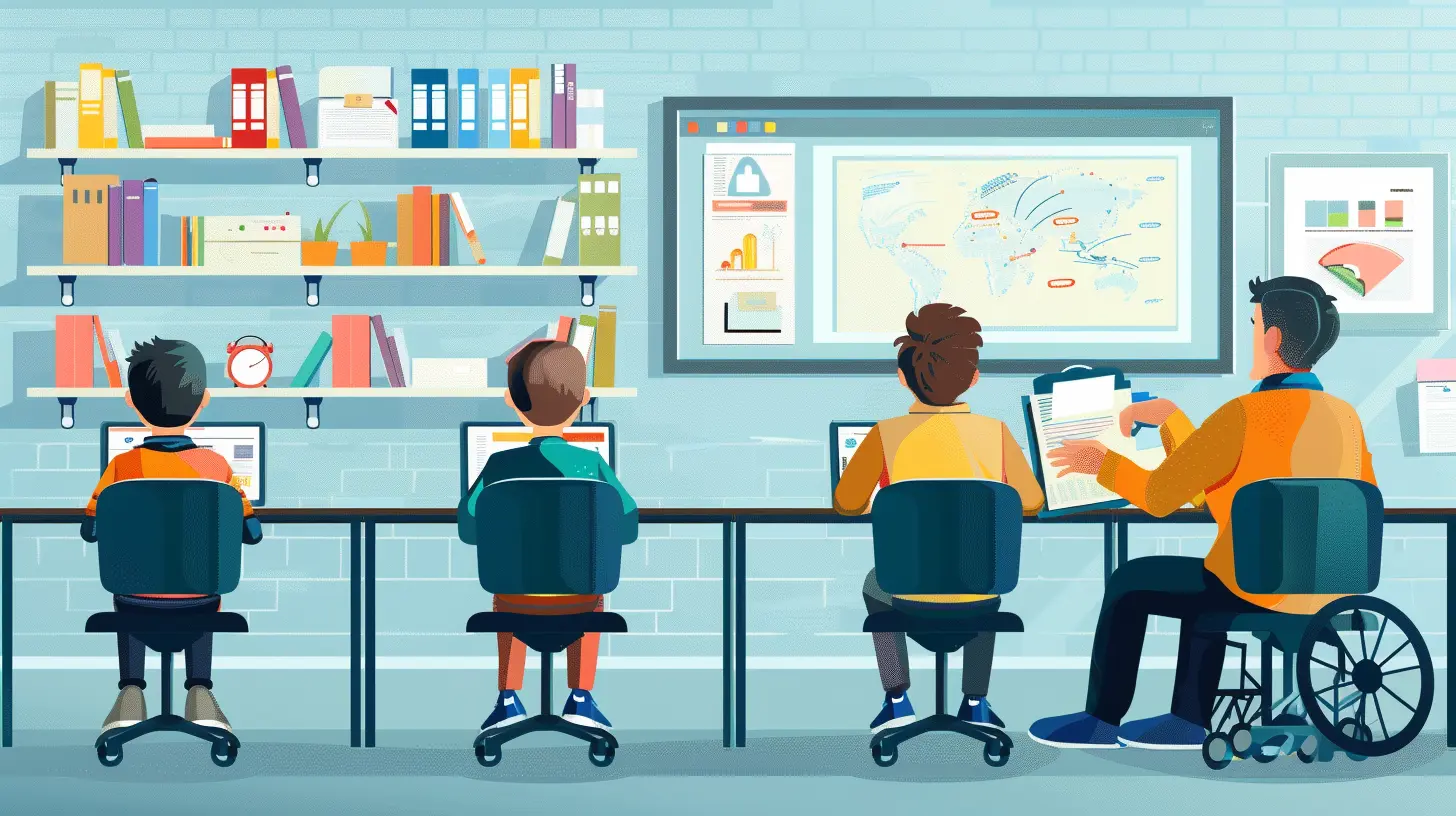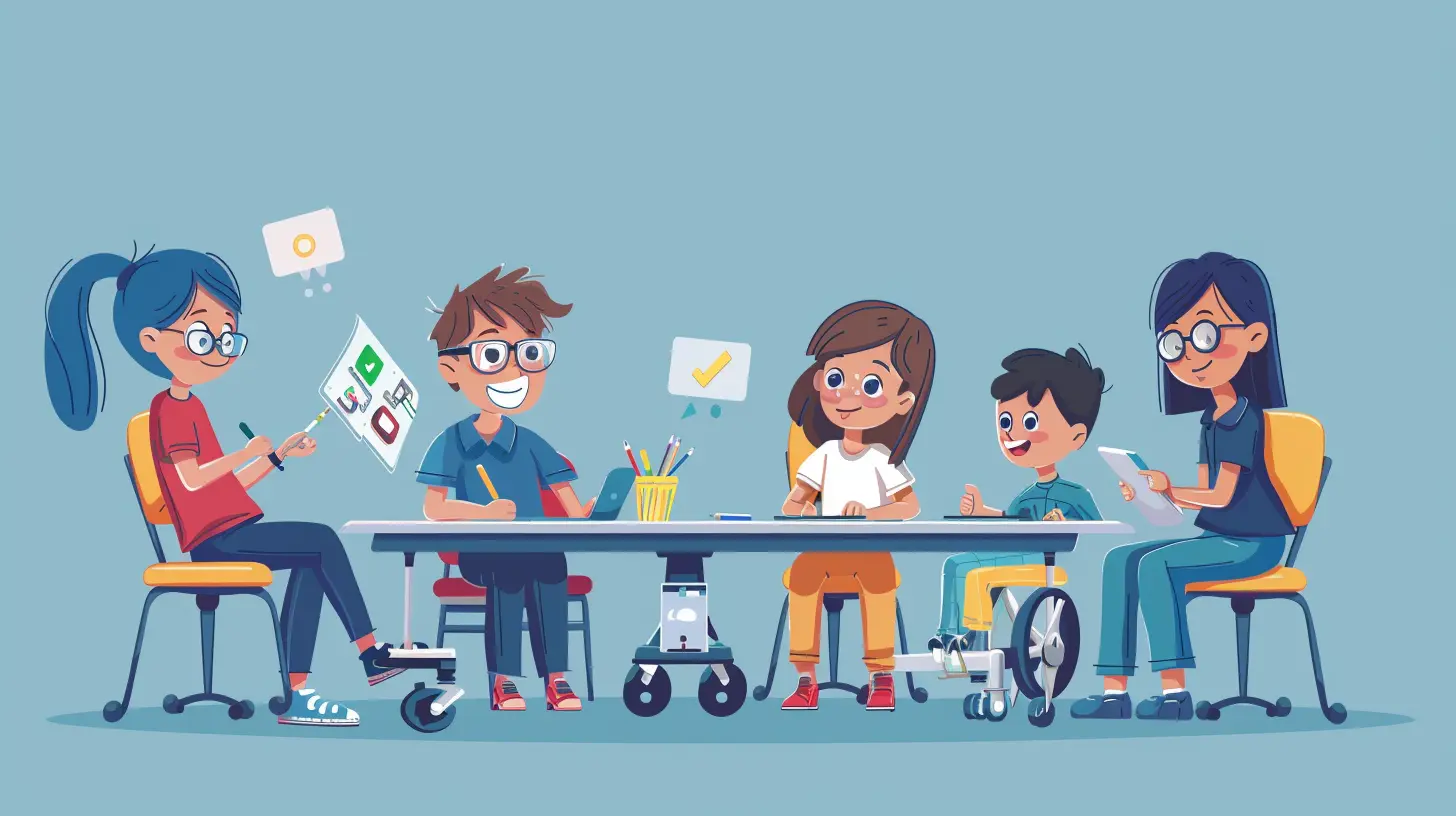Assistive Technology Tools to Support Students with Special Needs
31 May 2025
Education is meant to be a journey for everyone, but for students with special needs, the road can sometimes feel like it's filled with obstacles. Thankfully, assistive technology (AT) acts as a bridge, helping these students overcome challenges and unlock their full potential.
But what exactly is assistive technology? And how does it reshape the learning experience for special needs students? Let’s dive deep into this fascinating world and uncover the tools that are changing lives. 
📌 What Is Assistive Technology?
Assistive technology refers to any device, software, or tool that helps individuals with disabilities perform tasks they might otherwise struggle with. This can range from something as simple as a pencil grip to advanced speech-to-text software.For students with special needs, AT is a game-changer. It provides them with the support they need to communicate, learn, and interact with the world around them. Whether a student has dyslexia, autism, or a physical disability, assistive technology can help level the playing field. 
🔥 Why Does Assistive Technology Matter?
Imagine trying to run a race while carrying a heavy backpack, while everyone else runs freely. That’s how many students with disabilities feel in a traditional classroom. Assistive technology removes that burden, giving them an equal chance to succeed.Here are a few ways AT makes a difference:
✔️ Boosts independence – Students can complete tasks on their own without constant assistance.
✔️ Enhances communication – Those with speech impairments can express themselves using alternative methods.
✔️ Improves learning experiences – Customized tools cater to individual needs, making learning more accessible.
Now, let’s take a look at some incredible assistive technology tools that support students with special needs. 
🧠 Types of Assistive Technology Tools
Assistive technology comes in many shapes and sizes, depending on the type of challenge a student faces. Here are the most impactful categories you should know about:1. Communication Tools (AAC Devices)
For students who struggle with verbal communication, Augmentative and Alternative Communication (AAC) devices open up a whole new way of expressing themselves.🔹 Speech-generating devices (SGDs) – Tools like the Tobii Dynavox and Proloquo2Go help non-verbal students communicate using digital voice output.
🔹 Picture exchange communication systems (PECS) – This involves using picture cards to represent words, aiding students with autism or speech impairments.
🔹 Text-to-speech software – Programs like Dragon NaturallySpeaking convert written text into spoken words, assisting students with dyslexia or visual impairments.
2. Reading and Writing Assistive Tools
Not every student processes text the same way, and for those with dyslexia or other learning disabilities, reading and writing can be a real struggle. Thankfully, assistive technology steps in to lighten the load.📝 Reading Assistants
- Kurzweil 3000 – A powerhouse tool that reads aloud text from books, PDFs, and websites, helping students retain information.
- Google Read&Write – A browser extension that reads text aloud and includes text prediction for writing assignments.
- Bookshare – A digital library providing accessible books for students with visual impairments or learning disabilities.
✍️ Writing Assistants
- Grammarly – More than just a spell-checker, it helps students structure their sentences clearly.
- Co:Writer – Designed for students with learning disabilities, this tool predicts words as they type, improving writing fluency.
- Livescribe Smartpen – This pen records lectures while syncing with written notes, making studying a breeze.
3. Math Assistive Tools
Numbers don’t have to be a nightmare! For students who experience difficulties with math due to dyscalculia or other cognitive impairments, assistive technology provides valuable support.🧮 Math-Friendly Tools
- MathTalk – Converts spoken math problems into written text, assisting students with motor skill difficulties.
- ModMath – A free app that allows students to complete math assignments digitally, eliminating handwriting challenges.
- EquatIO – Helps students write math equations using voice commands or digital handwriting.
4. Mobility and Motor Skill Aids
For students with physical disabilities or motor impairments, everyday classroom activities can be challenging. But with the right assistive tools, mobility is no longer a barrier.♿ Adaptive Equipment
- Sip-and-Puff Systems – Allows students to control a computer or wheelchair using their breath.
- Switch-Adapted Keyboards & Mice – Devices like the BigKeys Keyboard offer larger keys for students with limited motor control.
- Voice Recognition Software – Programs like Dragon Speech Recognition allow students to control devices and write using their voice.
5. Sensory and Behavioral Support Tools
Many students with autism or sensory processing disorders struggle with overstimulation or focus. Sensory-based assistive technology helps create a more comfortable learning environment.🎧 Sensory-Friendly Tools
- Noise-Canceling Headphones – Brands like Bose QuietComfort reduce background noise, helping students focus.
- Time Timers – Visual timers help students understand time more effectively, reducing anxiety.
- Fidget Tools – Items like Tangle Therapy or compression vests provide a calming effect for students needing sensory input. 
🚀 How Schools Can Integrate Assistive Technology
While assistive technology is powerful, it’s only effective if properly integrated into the learning environment. Here are some ways schools can ensure success:✅ Personalized Assessments – Every student has unique needs. Educators should work with parents and specialists to find the best AT tools for each learner.
✅ Teacher Training – It’s not just about giving students the right tools; teachers must be properly trained to integrate AT into daily lessons.
✅ Classroom Accessibility – Schools should ensure that AT tools are available in all learning settings, from classrooms to libraries.
✅ Encouraging Student Independence – Assistive technology should empower students, not isolate them. Encouraging self-confidence while using these tools is key.
🎯 The Future of Assistive Technology
The world of assistive technology is evolving at lightning speed. With the rise of artificial intelligence (AI) and machine learning, future tools will be even more personalized and intuitive.📌 Imagine a world where AI-powered assistants can detect when a student is struggling and automatically adjust the lesson. Or where virtual reality (VR) helps students with mobility impairments explore the world without barriers. The possibilities are endless!
Assistive technology isn’t just a tool—it’s a revolution, breaking down barriers and proving that education should truly be accessible to everyone.
🌟 Final Thoughts
No student should feel left behind because of a disability. Assistive technology is more than just gadgets and software—it’s a lifeline, a voice, and a key to unlocking potential.Whether a learner struggles with reading, communication, or mobility, there’s an assistive tool out there that can make a difference. Schools, educators, and parents all play a crucial role in ensuring that special needs students receive the support they deserve.
So, the next time you see a student using a screen reader, a speech-generating device, or a specialized keyboard, remember—it's not just technology. It's empowerment.
all images in this post were generated using AI tools
Category:
Special EducationAuthor:

Anita Harmon
Discussion
rate this article
3 comments
Colin McTiernan
Great resource for teachers!
June 17, 2025 at 2:53 AM

Anita Harmon
Thank you! I'm glad you found it helpful!
Selena Barrett
Thank you for highlighting the importance of assistive technology in education. These tools not only empower students with special needs but also foster inclusion, making learning accessible and enriching for everyone involved.
June 14, 2025 at 4:11 AM

Anita Harmon
Thank you for your thoughtful comment! I'm glad you found the article valuable in highlighting the role of assistive technology in promoting inclusion and accessibility in education.
Kennedy Wright
Great article! It's inspiring to see how assistive technology can empower students with special needs, enhancing their learning experience. These tools truly make a difference in fostering inclusion and growth!
June 10, 2025 at 3:21 AM

Anita Harmon
Thank you! I'm glad you found the article inspiring. Assistive technology truly plays a vital role in promoting inclusion and enhancing learning for all students.



